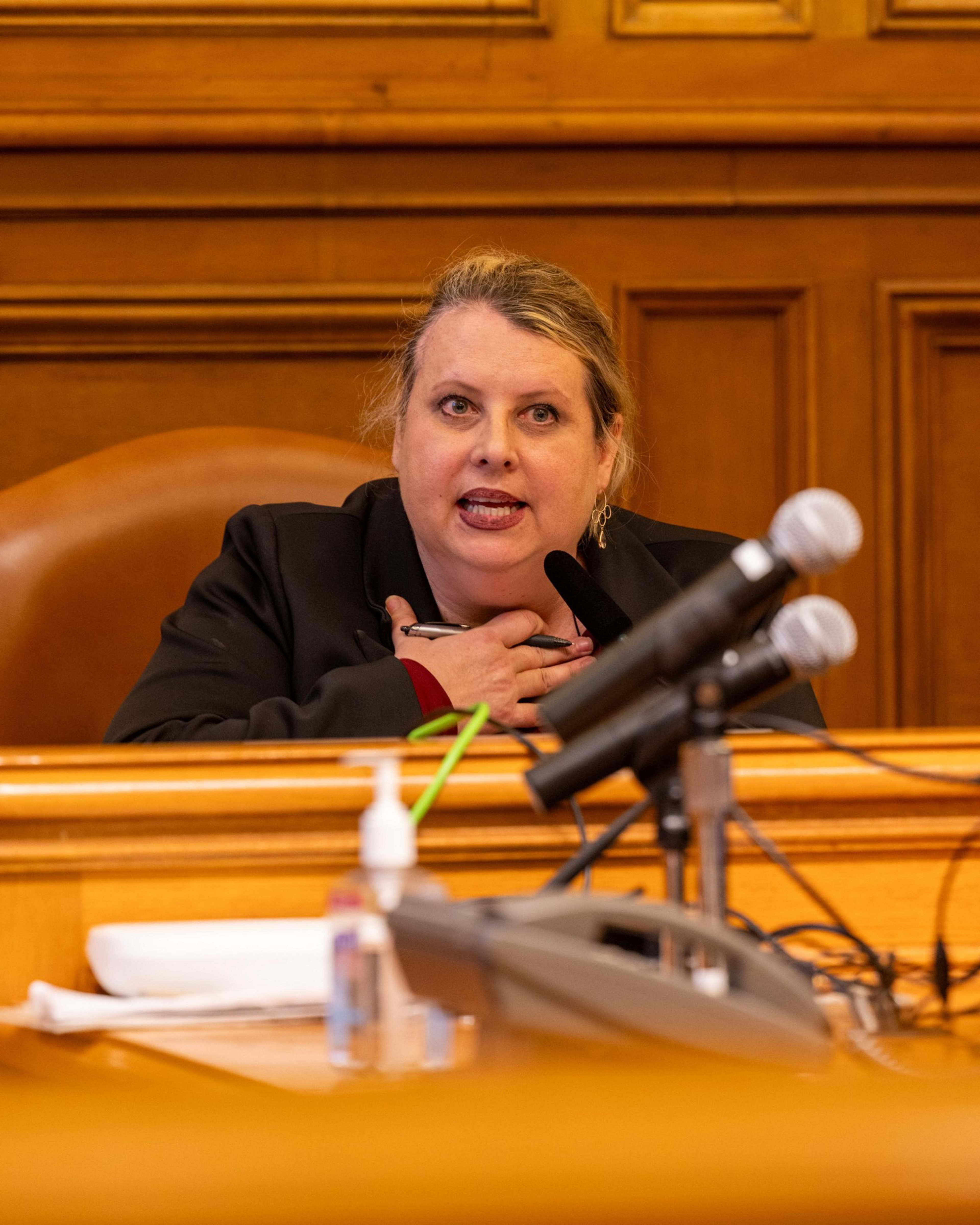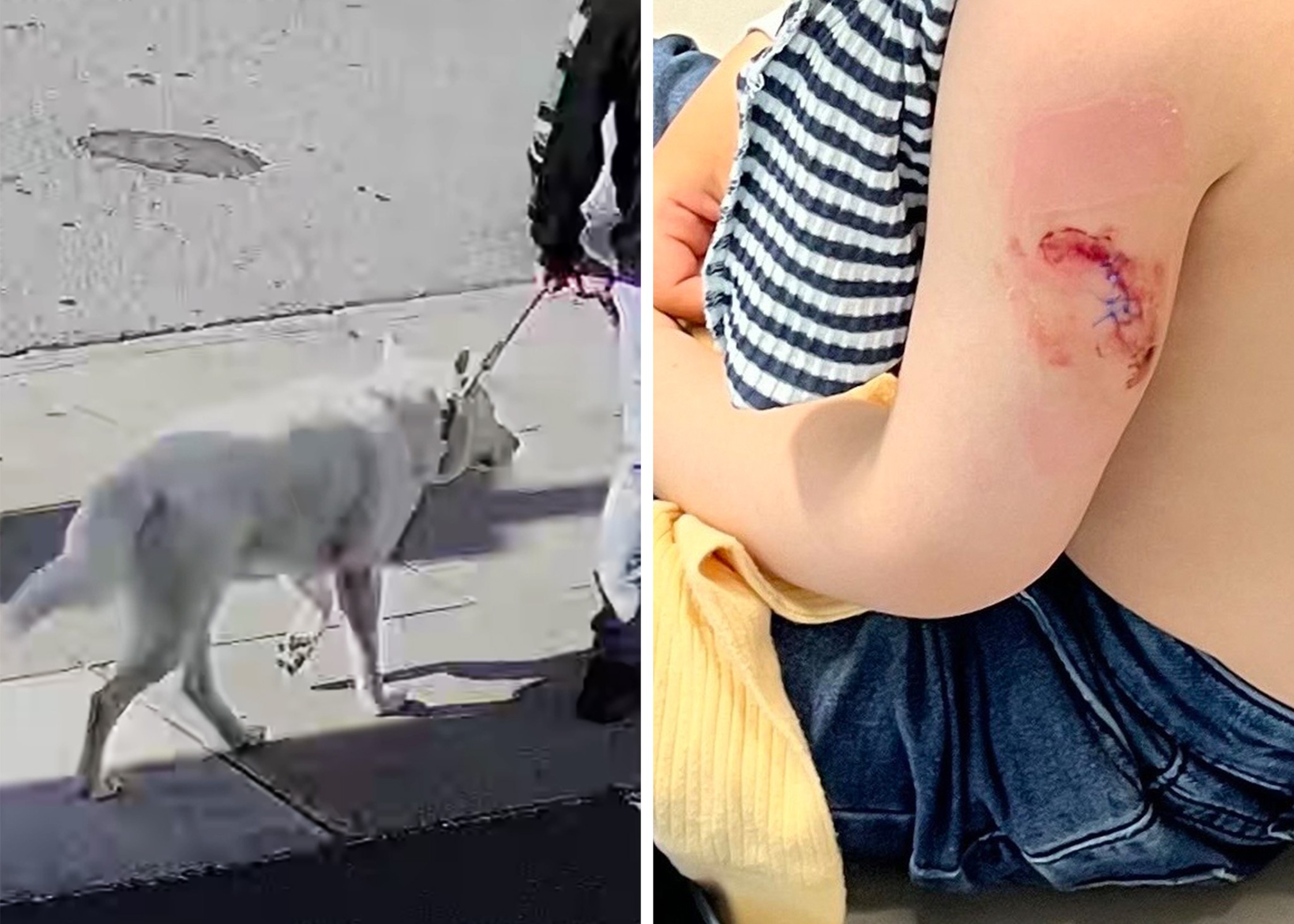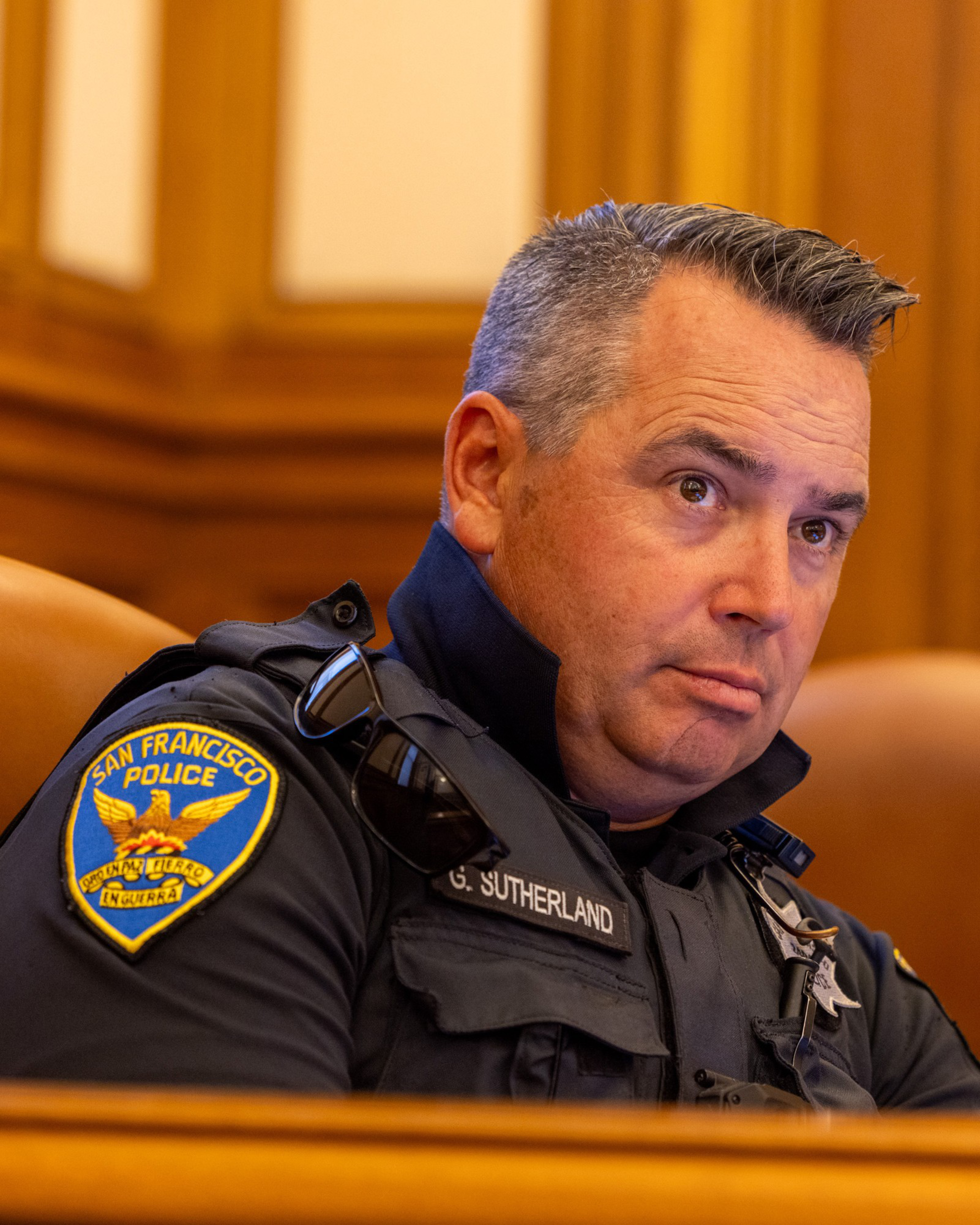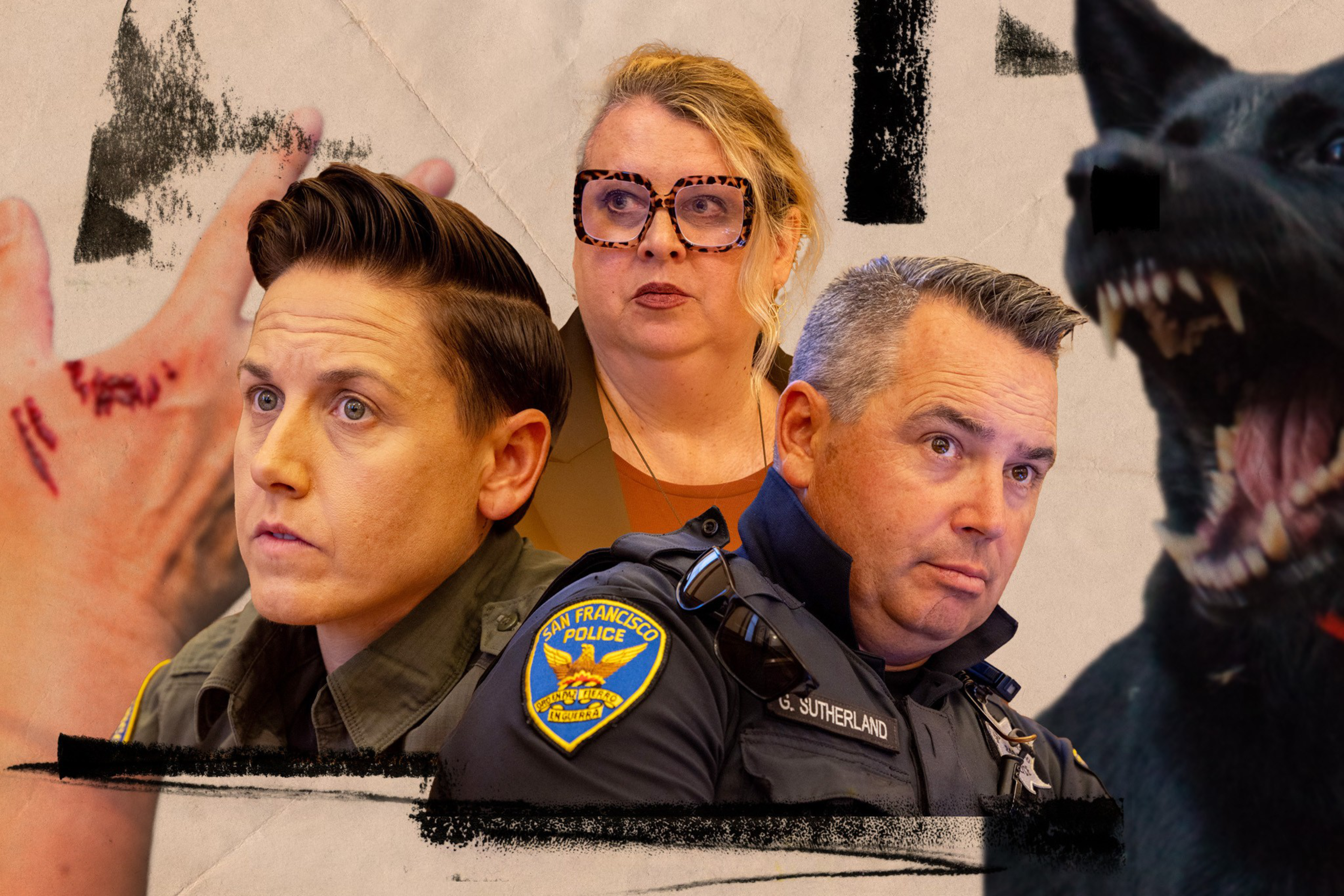Yolanda Mejia was almost in tears as she stood before the dog court at San Francisco City Hall.
In May, her husky-Labrador mix, Max, chased down a toddler on a Marina sidewalk, tackled the boy and bit deep into his arm. Mejia was in court to answer to a city-appointed dog judge.
“Please don’t take him,” Mejia pleaded in Spanish. “I will train him.”
“Every option is on the table,” replied Janelle Caywood, a lawyer appointed to judge Tuesday’s hearing. “Your dog is not safe in public.”
The obscure canine justice system sees an average of 82 cases per year, serving as the arbitration process for the hundreds of dog bites reported in San Francisco annually.

Last year, 760 dog bites were reported, up from 753 in 2022 and 709 in 2021, according to San Francisco Animal Care & Control. Incidents of dog bites remain slightly below pre-pandemic levels.
Four officials oversee the quasi-judicial proceedings. Two lawyers from the Department of Police Accountability, including Caywood, serve as de facto judges. One police officer makes up the entire San Francisco Police Department Vicious and Dangerous Dog Unit, and one Animal Care & Control officer is designated to attend hearings.
The canine court cannot order jail time for dog owners. But in rare cases, it can sentence dogs to death. Decisions can be appealed in the San Francisco Superior Court.
At Mejia’s hearing, nobody mentioned euthanasia. Still, emotions ran high.
Jomai Dehaven, Mejia’s former neighbor, testified that almost exactly a year before the Marina attack, in the lobby of his Pine Street apartment building, Max attacked his dog, tearing into its skin and dislodging its ID chip. As video of the attack played on a screen during the hearing, Dehaven grimaced and fought back tears.
“He would stalk people,” Dehaven said of Max from the witness stand. “He would stare at people inappropriately. I was just afraid of him.”
Clare Wong, the mother of the boy attacked in the Marina, testified remotely, describing her shock at seeing the severity of the bite when the family’s nanny brought her son home.
“It was more horrible than anything we had imagined,” she said. “It’s an image we could never forget.”
The dog’s teeth penetrated two layers of the toddler’s clothes — a hoodie and a long-sleeved shirt — and drew enough blood to soak through the garments.

Wong said she wonders what might have happened if her son hadn’t raised his arm in self-defense — Max may have sunk his teeth somewhere worse.
“It’s very scary as a parent to think about things like that,” Wong said.
The attack left her son mentally scarred, she added. Since that day, he has been frightened of dogs when he sees them on the street.
“There need to be consequences for such a vicious attack,” she said. “I want to make sure the dog can’t hurt anybody again.”
Wong said Mejia and her boyfriend, Fredy Gomez, did not offer their contact information to the nanny at the time. She said she was able to identify the two only after procuring security footage from a nearby hotel and posting it on Nextdoor.
“Dog bites are like car accidents,” Caywood told Mejia during the hearing. “You can’t leave the scene. You have to stay and provide your information.”
‘Somebody’s gotta do it’
Capt. Rebecca Fenson of Animal Care & Control said hearings rarely get interesting. Though she does not currently attend them, she has sat through around 100 — making her one of the most experienced officers in her agency.
“It’s really not sexy stuff,” Fenson said. “The ones that get a little more ‘Jerry Springer’ are where owners get emotional. You just feel like your child’s gotten in trouble in kindergarten. It’s totally understandable.”
Dog judges consider several factors when making their decisions, said Virginia Donohue, executive director of Animal Care & Control. One is the “bite scale”: an official way to grade the severity of a dog bite. Another is the dog’s history of attacks.
Ultimately, it’s up to Caywood and fellow hearing officer Diana Rosenstein to decide what to do with the dogs.

The Police Department’s one-man dog unit, Officer Greg Sutherland, can offer a recommendation, but he typically sticks to reporting the findings of his investigations. Animal Care & Control officers can also recommend a course of action, but they tend to only share any records of the dog’s history.
Donohue said the agency does not track how many euthanizations — “destruction orders,” as they’re officially called — are handed down from dog court. She could recall only one this year.

Fenson said she is inured to contentious hearings where euthanasia might be at play.
“It would be sad if the dog had a really good home,” she said. “But that often isn’t the case. We see so many soul-crushing, heartbreaking cases of dog abuse. I just want everyone to be in compliance.”
Rosenstein, the other dog judge, is likewise unfazed.
“I don’t mind it,” Rosenstein said. “Somebody’s gotta do it.”
SFPD declined to make Sutherland available for an interview. The Department of Police Accountability declined a request to interview Caywood.
‘Afterward, I was afraid’
Last to take the stand Tuesday was Gomez, Mejia’s boyfriend who co-owns Max.
He had little to say, other than that he couldn’t offer the nanny his contact information after the attack because he does not speak English. Caywood told him through an interpreter that he should’ve offered his driver’s license.
“I have concerns that you may not be taking this dog’s aggressiveness seriously enough,” Caywood said.
In surveillance footage from after the attack, Gomez sits back down at the restaurant where he was dining and sips a drink.
“It appears you just sat down and finished your beer and didn’t do anything,” Caywood said.
“Afterward, I was afraid,” Gomez replied. “So I drank the beer.”
A decision about Max’s fate is expected within weeks.

